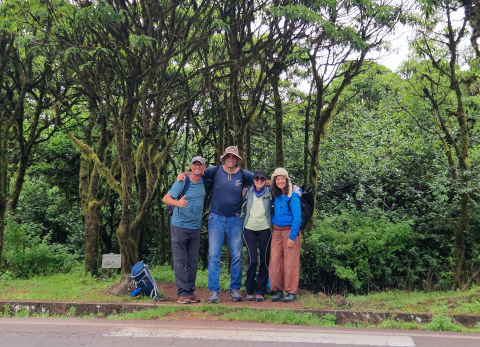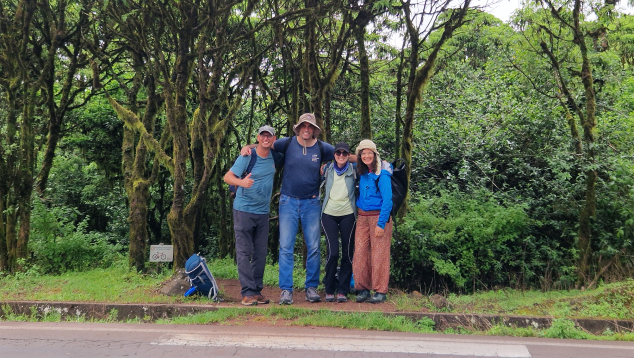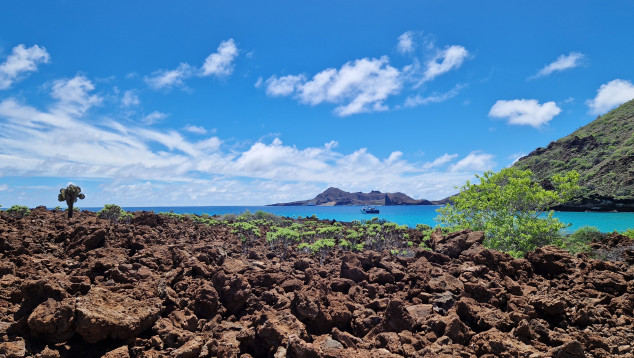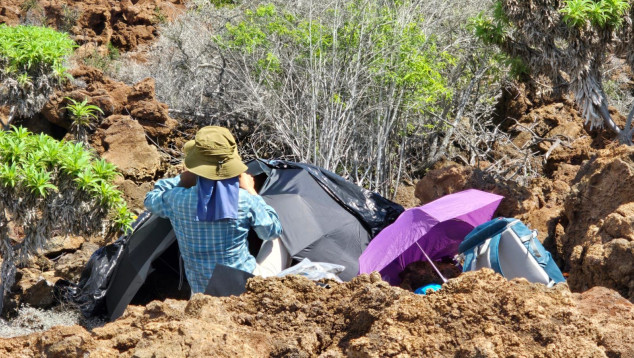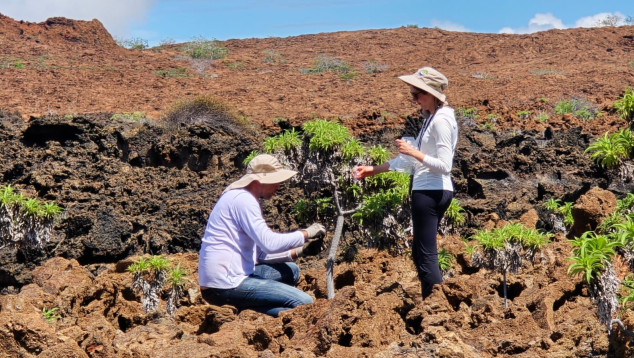Two years after our first scientific expedition, we returned to the Galápagos Islands—this time with sharper tools, new goals, and even more excitement. Our mission? To dive deeper into the hidden microbial world of Scalesia, the archipelago’s iconic giant daisies, and uncover secrets that even our earlier work only hinted at.
A second expedition to unravel the microbial world and more
This second expedition also marked a key expansion of our research team at NIOO. We welcomed Dr. Luzia Stalder, who brings expertise in bioinformatics and modeling of microbial ecosystems, helping us decode complex microbial networks and predict their dynamics across the different islands. We were also joined by Dr. Mark Zwart, whose focus on virus ecology and evolution adds a vital dimension to our understanding of plant-microbe interactions.
As scientists, we can never collect enough microbes or data! This time, we didn’t just collect soil and plant samples—we gathered additional data, including high-resolution leaf photographs and leaf and soil samples to analyze their physicochemical properties. These data will help us link microbial communities to the plants’ physical traits. Leaf morphology and chemistry will be tied to microbial distribution on the leaves, while soil measurements will reveal the volcanic ground’s chemistry, connecting geology and biology in ways Darwin could only imagine. And yes, we added more locations, venturing to different corners of the islands.
What’s next? Back in the lab, the real detective work begins. DNA and RNA sequencing will further reveal the diversity of microbial communities associated with the Scalesia, and soil data will map microbial habitats. And those close-up leaf photographs? They might just show us how microbes leave their mark on Scalesia’s surface.
The exploration of the microbial invisible world in Galápagos is far from over. And neither are we!
P.S. Missed our expedition film? Catch up here to see the adventure in action!

